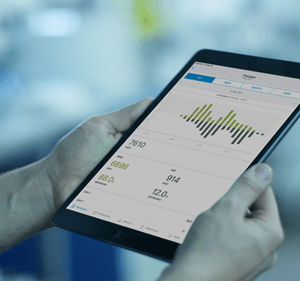Securing the Flexible Workplace: Navigating Remote Work Challenges
The challenges that arise from this shift permeate the physical workplace and present new security demands throughout the office. Technology in the form of access control innovation can assist in providing connected solutions to these problems…
The Rise of Flexi-working
Whether out of necessity or convenience, remote and flexible working has seen an uptake of 140% since 2005 with more businesses and employees recognizing the benefits of flexible working hours from home or office.
High speed internet capabilities, the rollout of 5G, and video conferencing have all become commonplace so that colleagues can have face to face meetings while being many miles apart. Whilst remote working from anywhere has been around for the last 30 years, it has particularly accelerated and really taken off in the last 10 years with an unexpected major boost since the pandemic.
Covid-19 – The Catalyst of a Mass Global Experiment
The pandemic of 2020 forced a working from home model for millions of workers around the world, seeing a digital transformation which under normal circumstances would have taken years, successfully condensed into weeks.
We’ve seen two years’ worth of digital transformation in two months.”
Satya Nadella, Microsoft CEO
The Covid-19 outbreak has transformed the work landscape perhaps forever, as recovery is now taking place, but there will be longstanding changes that have occurred as a consequence.
One of these consequences being flexible working for employees. Staff have proved that they can thrive in working from anywhere, prosperously achieving deliverables regardless of physical location or time of work.
With this in mind, it has persuaded many businesses to adopt flexible working strategies for their employees for the foreseeable future, as providing people the autonomy to adapt has brought about improved wellbeing and productivity.
Multi-tenant buildings – space saving and sharing
Another consequence of the pandemic on work life being the rise of multi-tenant buildings predicted to soar in the years to come. With increased remote working, less personnel are needed onsite, requiring less space and a reduced footprint within the office. As a result, multiple companies using the same building will be more prevalent.
More companies in the same office building will mean new security and solutions requirements. From the traditional control of access at office building façade (out of office hours) and lobby area (during office hours), each company need to ensure that only relevant staff and visitors access their floor or designated space.
The ability to assign new access rights, change permissions and/or manage exceptions such as employees arriving at work having forgotten their badge, will need to be shared between two co-existing companies in the building.
The security challenges
Now all of these factors of flexible, remote working and rotating shifts present different challenges for physical security, with changing schedules, extended hours and multi-tenant building access. Businesses need to recognise that flexible work hours and offices will inevitably change the flow of people traffic throughout the office building.
45% of people said that security was the biggest challenge they faced when shutting down their offices. When nobody is physically present at work, how can business owners ensure their facility is still secure? Businesses are tackling managing requests for temporary access for employees, maintenance staff, and deliveries, and those who are reducing capacity by making changes to work schedules are needing to constantly shift hours and enforce new schedules on the fly.
Flexible hours will also mean extending the operational availability of the office building, requiring 24/7 access opportunity. This will in turn create a challenge in providing coverage to support possible incidence over such an extended period.
All in all, access control systems will be required to operate remotely, during extended hours, and manage the building access at each entry/exit point. This will likely lead to a concentration of remote operations with the ability to control multiple sites from a single location and / or on the move with Remote Security.
Leveraging access control innovation for seamless solutions
Taking advantage of new technologies available can help building managers provide a more seamless entry-to-seat experience. From contactless entry devices to the ability to manage queues and entrance optimization to smartphone control, technology has a profound effect on building security, enhancing building management to offer modularity, customization, improved efficiency and sustainability.
Enterprises slow on the uptake of digitalisation will struggle to bridge the digital divide. With all the benefits of innovative technology for more robust and optimized security, veteran companies favouring the old familiar will risk losing talent, reputation and capital by lagging behind with outdated and/or manual processes.
Innovation in access control going forwards
In the digital-first world that we find ourselves in, prioritising technology investments to deliver a safer, smoother user experience not only protects all stakeholders onsite but also encourages trust between employer and employee for a mutually beneficial safe and secure environment.
As flexible working is here to stay, businesses should be making the necessary adjustments for employee self-governance to do their job well. The improved welfare generated from these flexible working conditions fortifies the relationship of interdependence as a result.


![Speedstile Fp Ds Insitu 005[1920x1080] 20190321114606](https://gunnebo.com.au/wp-content/uploads/SpeedStile-FP-DS-InSitu-0051920x1080-20190321114606.jpg)
